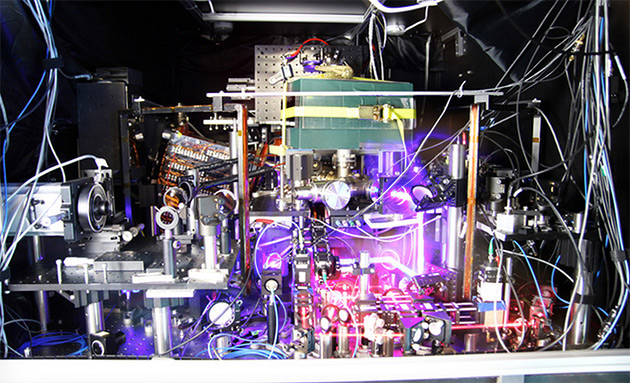JILA Strontium Atomic Clock - The God Of Time Keeping
The JILA Strontium Atomic Clock is the new God of time keeping - and it's going to do the job till the end of the world. The creators of the clock at the National Institute Of Standards and Technology aka NIST say that the clock would maintain time for 5 billion years. They claim to have achieved a world record in both precision and stability. The clock resides in the laboratory at JILA - a joint institute run by the University Of Colorado Boulder and NIST. The latest paper in Nature describes the clock as about 50% more precise than the earlier record holder - NIST's own quantum logic clock.

The precision of the clock is the measure of how the closely the clock matches the resonant frequency - aka the frequency at which the reference atoms oscillate between two electronic energy levels. The makers say that the JILA Strontium Atomic Clock won't gain or lose a second in 5 billion years - if it lasts for that long. The stability of the clock is about how the durations of each tick of the clock match with each other.
But the engineers aren't content yet. They want to push the performance of the clock even further and promise a breakthrough in the next 5 to 10 years. The struggle however, is different. The current definition of units of time, which has been accepted internationally require the time-keeping to be done by caesium based clocks viz. the US civilian time standard clock and NIST-F1 caesium fountain clock. It's a fact that the strontium based clocks are more precise than the caesium clocks; and hopefully the strontium clocks would be accepted as the new standard by the international community.
The JILA clock holds a few thousand strontium atoms in a column of about 100 traps formed by intense laser light. The recordings are made for strontium's ticks, approximately about 430 trillion times per second by exposing the atoms to a stable red laser at the exact frequency that prompts the transition between energy levels.
The researchers believe these atomic clocks would be helpful in developing extremely precise sensors for measurement of gravity and temperature.
Source: #-Link-Snipped-#

The precision of the clock is the measure of how the closely the clock matches the resonant frequency - aka the frequency at which the reference atoms oscillate between two electronic energy levels. The makers say that the JILA Strontium Atomic Clock won't gain or lose a second in 5 billion years - if it lasts for that long. The stability of the clock is about how the durations of each tick of the clock match with each other.
But the engineers aren't content yet. They want to push the performance of the clock even further and promise a breakthrough in the next 5 to 10 years. The struggle however, is different. The current definition of units of time, which has been accepted internationally require the time-keeping to be done by caesium based clocks viz. the US civilian time standard clock and NIST-F1 caesium fountain clock. It's a fact that the strontium based clocks are more precise than the caesium clocks; and hopefully the strontium clocks would be accepted as the new standard by the international community.
The JILA clock holds a few thousand strontium atoms in a column of about 100 traps formed by intense laser light. The recordings are made for strontium's ticks, approximately about 430 trillion times per second by exposing the atoms to a stable red laser at the exact frequency that prompts the transition between energy levels.
The researchers believe these atomic clocks would be helpful in developing extremely precise sensors for measurement of gravity and temperature.
Source: #-Link-Snipped-#
0
